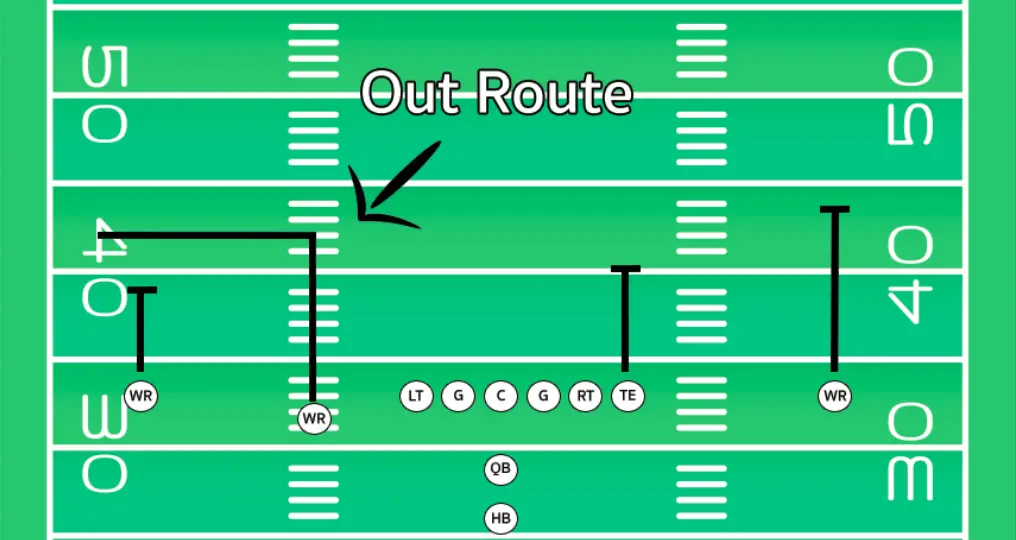Between hooks, flys, ins and outs football routes can get a little confusing. Luckily this article is on hand to break down exactly what an out route is in football.
An out route in football is a short route primarily run by receivers and tight ends that breaks towards the sideline.
Out routes can be run at many different depths but usually take place five to ten yards down the field.
On an out route the receiver will run in a straight line down the field until they reach their intended depth. Once they have reached their required distance downfield they will turn at a ninety-degree angle towards the sideline.
The sharp turn towards the sideline should generate separation from the defender that is covering the wide receiver. Once making the cut the receiver will run parallel to the line of scrimmage until they reach the sideline.
The depth of out routes often depends on how many yards the team needs on the play. As well as how the opposing team is setting up their defense.
What To Know About Out Routes
Now that we have established what an out route is in football it’s time to get into the details. Below we’ll break down several important facts you need to know about out routes.
Foot Work Is Important
One important factor of out routes is that the ball is often thrown as the wide receiver reaches the sideline. This means in order to catch these routes consistently you will likely have to have good control of your feet near the sideline.
In the NCAA this is not as difficult as only one foot needs to be inbounds for a player to make a catch. While in the NFL players will need to keep both feet in bounds for the catch to be ruled complete.
This often leads to receivers toe-tapping on the sideline in order to complete a catch.
Crucial For Two Minute Drills
Out routes are also an important staple in the two-minute drill offense. The two minute drill refers to the plays a team will use in order to drive down the field with only a small amount of time remaining.
When a player travels out of bounds with the ball it results in the game clock stopping. For this reason, passes near the sideline are especially useful when trying to move the ball in a short amount of time.
This is why out routes are often used in the two-minute drill. As they allow the team to move the ball down the field without using too much of the time left on the clock.
Watch Out For The Pick Six
One more thing you should know about out routes is that they can potentially lead to pick-sixes. A pick six in football is another way of saying an interception that was returned for a touchdown.
Since this route is run towards the sideline there is often a large amount of open space around the receiver and the cornerback.
If the cornerback is able to jump the route and get an interception he will have a great chance to score. The wide receiver is the first player that will have a chance to bring down the defender after the interception.
If the wide receiver doesn’t make the tackle there is a good chance no other player will be able to reach the defender before he brings the ball to the endzone.
As a receiver, you should be aware of this threat and be ready to play defense if you see the cornerback attempting to intercept a pass on an out route.

